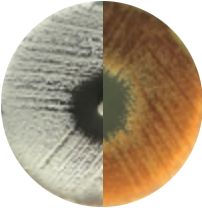Abstract
Introduction: Dermatophytosis is common in hot and moist climates like Vietnam, although the infection is normally limited to superficial skin but seriously affects the quality of human life. Long duration of treatment impacts gradually on patients adherence, which is an opportunity to develop antifungal resistance.
Objectives: Determinating species composition and susceptibility of isolates from clinical specimens at Hospital of Dermatovenereology in Ho Chi Minh city (11/2017-12/2017) to ketoconazole and terbinafine.
Materials and Methods: Isolation of dermatophyte from clinical specimens using selective dermatophytes test medium (DTM); Identification by morphological characters and biochemical reactions; Determination of in vitro susceptibility to ketoconazole and terbinafine according to an instruction of CLSI M44-A2 guideline and being adjusted by Nweze et al (2010).
Results: Of 165 clinical specimens collected from patients suffering dematomycosis in 11/2017-12/2017, there were 104 specimens positive with KOH microscopic examination. After isolating on selective media, we collected 55 isolates, among which that Trichophyton sp. accounted for 90,91% in comparison with 9,09% of Microsporum sp. and no isolates for Epidermophyton sp.. In terms of sensitivity to antifungal agents, there were 52,7% species susceptible to ketoconazole, 21,8% intermediate and 25,5% resistant to ketoconazole. All strains are terbinafine sensitive.
Conclusions: Most of dermatophyte belonged to Trichophyton sp.. There were 52% isolates susceptible to ketoconazole and 100% strains susceptible to terbinafine.
